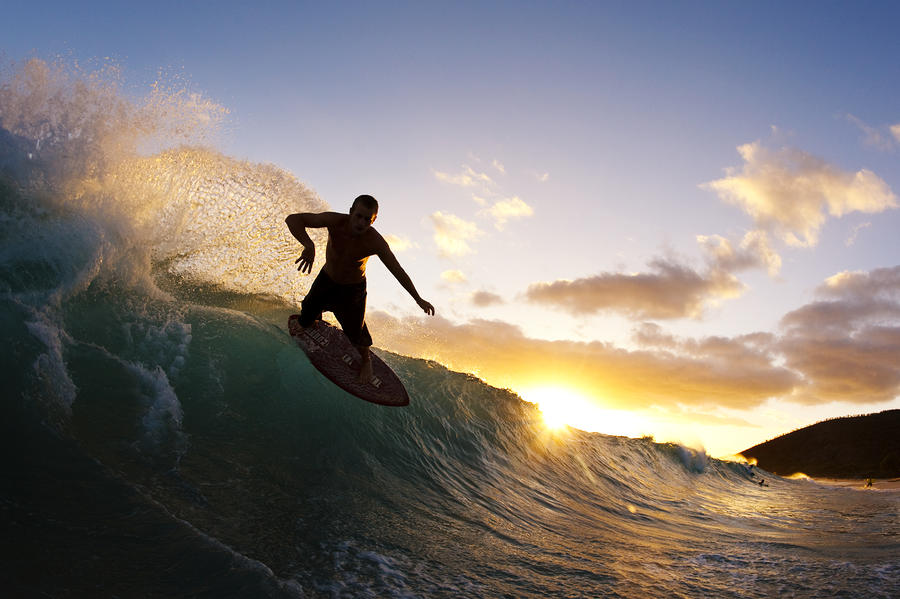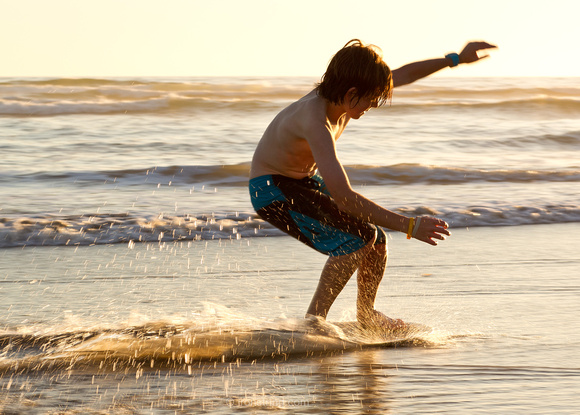The History of Skimboarding
When you first think of professional water sports, many activities come to mind, such as surfing, water skiing, swimming, diving or even things like kayaking and jet skiing. Of course, there are a ton of other sports too, some of them more obscure. One such sport that’s not necessarily obscure but small is skimboarding.
It’s similar to surfing, but the boards used are much smaller and devoid of fins. Skimboards are designed to glide across the water’s surface, as boarders usually try to catch incoming or breaking waves to ride back to the shore.
A skimboarding run generally starts on the beach, where the board is dropped into the thin veil of shoreline waves. Most skimboarders then use their momentum to skim the water out to breaking waves they then “catch,” or ride, back to shore.
Yet another form of skimboarding, referred to as “flatland,” involves staying close to the shore in order to perform tricks like ollies or shove-its, without ever catching a breaking wave. If you’d like to try out the sport or learn how to skimboard, naturally there are plenty of resources available today.
Where It All Began
Believe it or not, skimboarding has actually been around since the late 1920s. Laguna Beach lifeguards would used planks, or pieces of wood, to skim across the surface of the water close to shore in an attempt to surf the local shorebreak that was much too fast and powerful to navigate on foot. Since then, Laguna Beach has always been kind of a hotspot for skimboarding. This is because the waves break closer to the beach, making it an ideal spot for the sport.
Other areas with great waves for skimboarding include Santa Cruz, California; Dewey Beach, Delaware; Cabo San Lucas, Mexico; and most of the Florida coast. Laguna Beach, however, will always remain the number two spot second only to the waves of Cabo San Lucas.
Even though skimboarding has been around for quite some time, the sport didn’t start to really pick up until the 1960s and ‘70s. A small group of boys grew up skimboarding on Victoria Beach. They used unique boards often referred to as “double enders” because of the way they were designed, round at both ends of the board with an extended nose.
Two of those teenagers, Tex Haines and Peter Prietto, grew up to found Victoria Skimboards, named after the beach where they had spent most of their childhood. Over time, Victoria Skimboards became very popular and expanded from just a regular board store to something of an information and gathering center for the sport.
The Glory Years of Skimboarding
By the late 1980s, skimboarding had experienced a renaissance, with lots of renewed interest in the sport, as well as a boost in media coverage. One of the more prominent representations of the sport in popular media was Tom Trager skimboarding on the cover of Sports Illustrated.
In the late ‘80s and ‘90s, many large-scale media publications popped up dedicated to the sport of skimboarding. Some of these publications included Skim Online (1994), and Skimboard Magazine (1980s), which was eventually replaced by SKIM Magazine (1999).
Even with most of the media coverage, skimboarding still remains a relatively small sport today. That said, it is certainly one of the most technologically advanced water sports in practice, more so than surfing.
Many of the boards used by professional skimboarders have been designed using aerospace mechanics in order to offer enhanced buoyancy and extensive lightness. The boards are used in a variety of maneuvers similar to surfing. Some of those moves are called names like “wraps,” “big spins” and “360 shove-its.” They’re actually more akin to skateboarding moves than they are surfing moves, since skimboarding boards are more manageable than surfboards. But that’s not to say the sport is easier in comparison, because it’s not.
Modern-Day Skimboarding
Today, there are many professional events where skimboarders can show off their skills, including United Skim Tour and Skim USA in the United States, and the European Skimboard League in Europe. There’s also the Florida Pro/Am and The Florida Cross-Over Tour held each year, the former of which takes place in Vilano Beach, Florida. There are usually two types of contests for these events, one of which involves wave riding and the other flatland. Well-known participants of these events include Austin Keen, James Lovett, Paulo Prietto, Brad Domke, Grady Archbold, Sam Stinnett, Bill Bryan, Brandon Sears, Morgan Just, Brandon Rothe, and Jackson Tenney.
Many of those participants are sponsored by one of the three premiere skimboard companies that exist today, which are Exile Skimboards, Victoria Skimboards and Zap Skimboards.
As you can see, even though the sport remains relatively small, it’s just as active today as it was when it was first introduced in the 1920s. It’s difficult to imagine how far it’s come, too, considering the Laguna Beach lifeguards would use whatever pieces of wood they could find and now skimboarders use state-of-the-art equipment.
Have you ever been skimboarding? Let us know in the comments!


Wao that was really excellent about why do you miss about college? I just goosebumps while reading the history because I was just feeling the whole thing which pressure the swimmer feels in the water. Literally, for me, this is really scary but if I would say it looks me fascinated from outside.